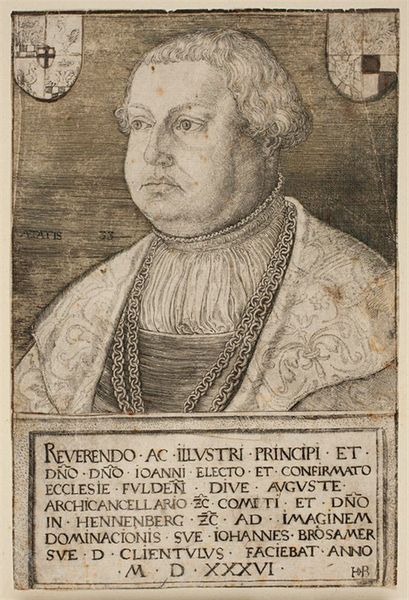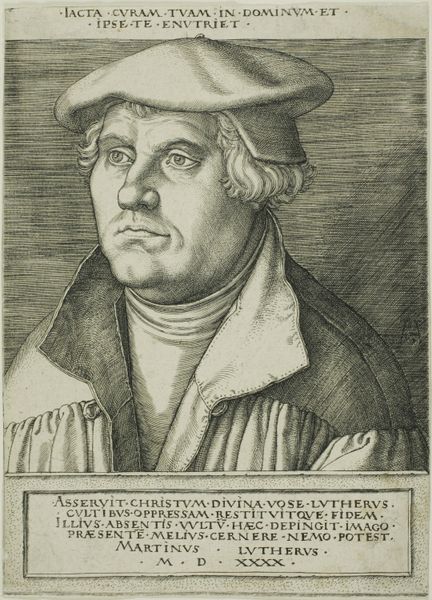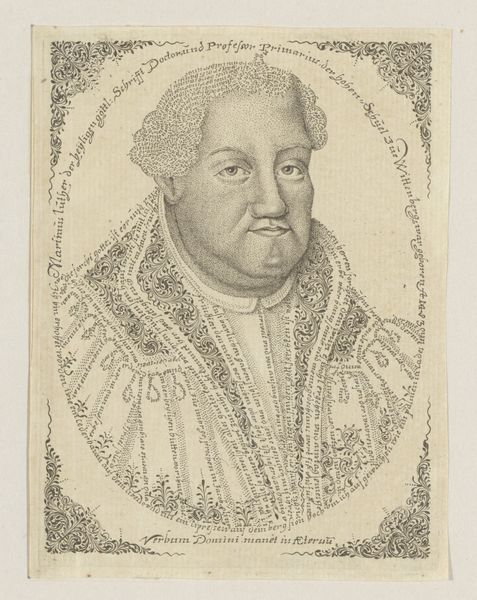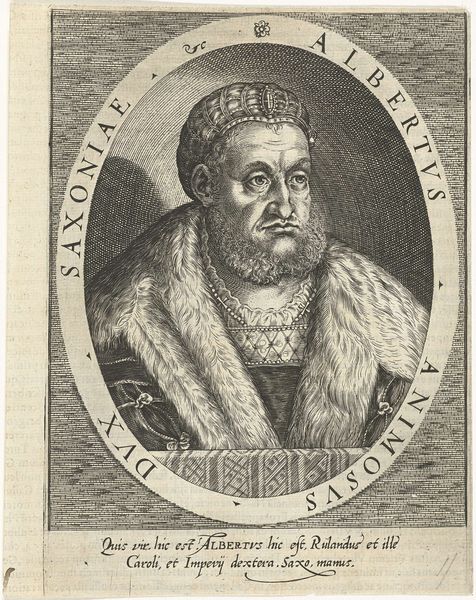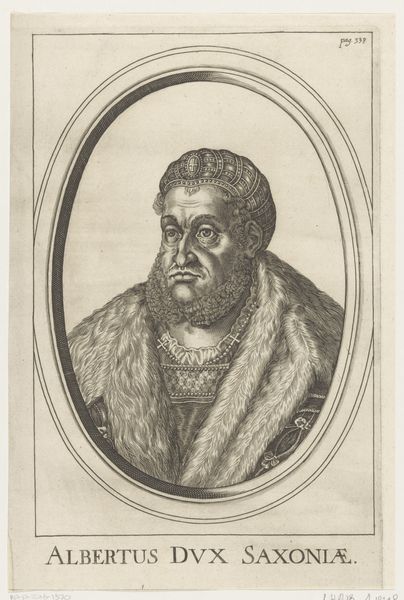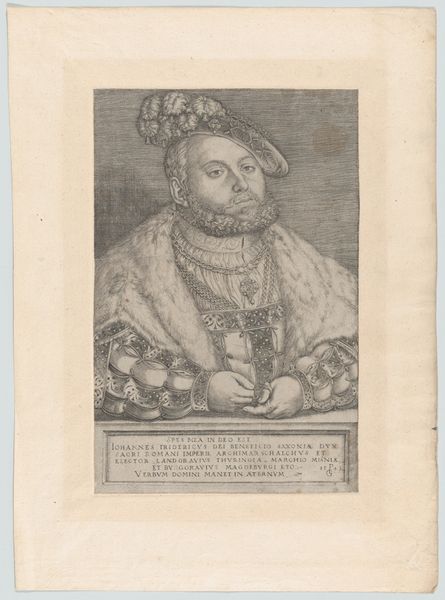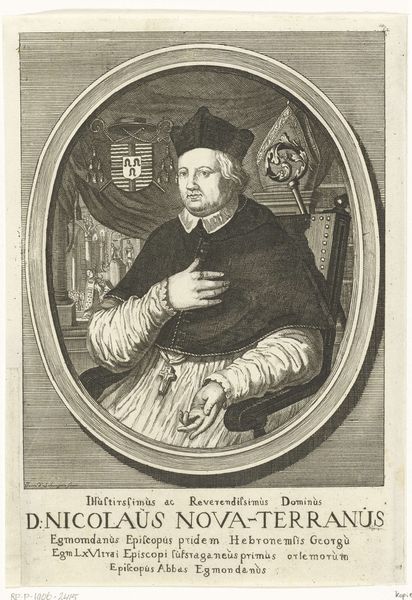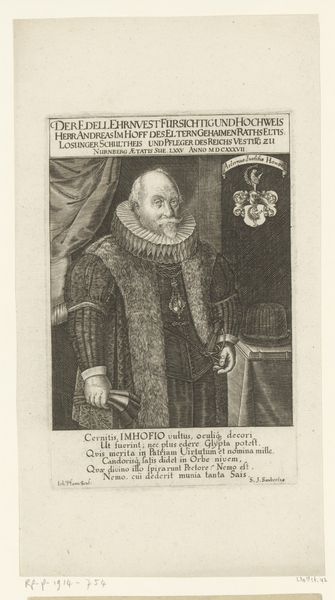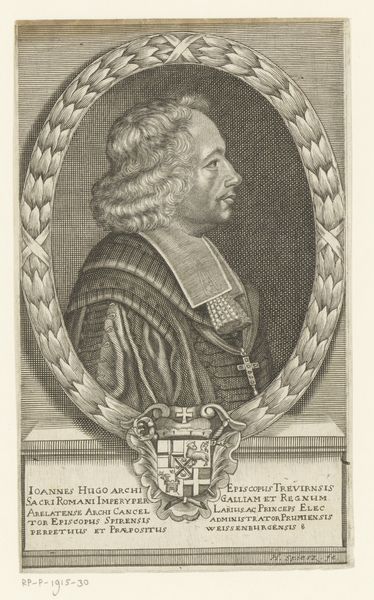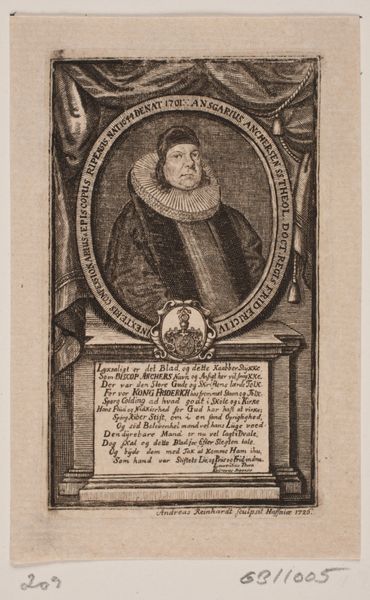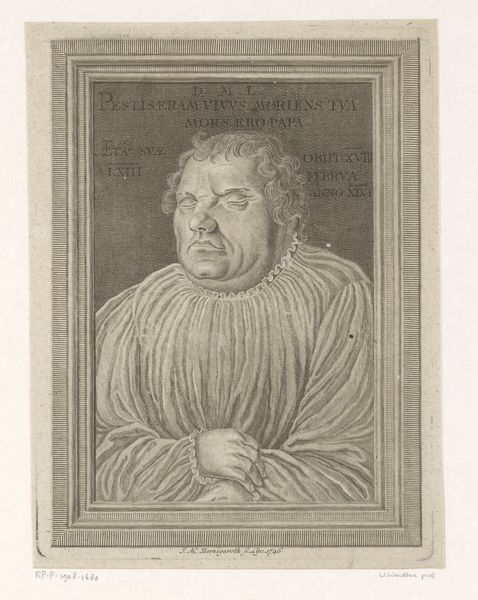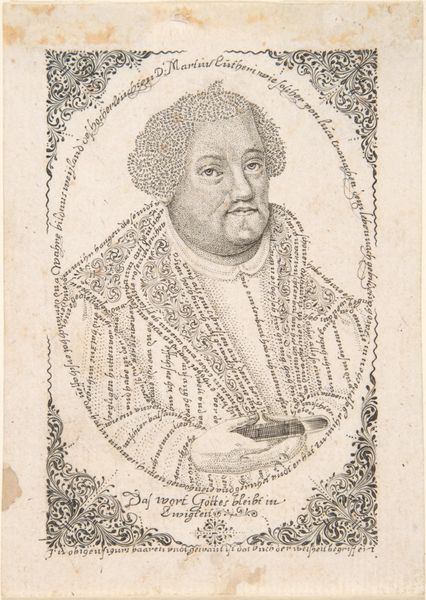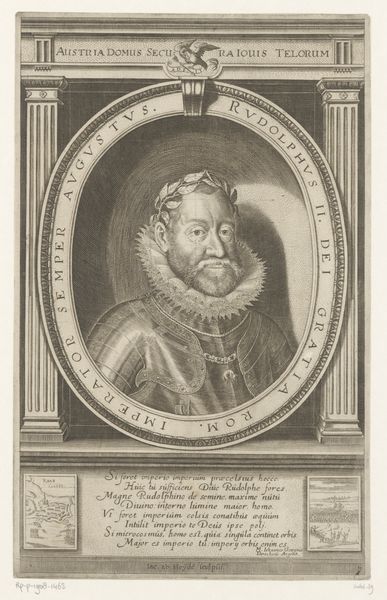
drawing, print, paper, engraving
#
drawing
# print
#
paper
#
11_renaissance
#
northern-renaissance
#
engraving
Dimensions: 185 mm (height) x 122 mm (width) (bladmaal)
Curator: Let's discuss this print, made by Hans Brosamer in 1536. It is currently held at the SMK, Statens Museum for Kunst. This is an engraving of Johann von Henneberg. Editor: It’s rather severe, isn’t it? The sharp lines of the engraving emphasize the subject's imposing presence. There's a formality in the portrait, almost a rigidity in the composition. Curator: The choice to portray Henneberg through print—a relatively accessible medium—hints at Brosamer's positioning within the political landscape. Consider that Johann von Henneberg held considerable power; this print serves as a visual assertion of authority but also facilitated a wider dissemination of his image, thus reinforcing his position within society. Editor: Semiotically, the textures created through the engraving are quite intriguing. Note how the fine, closely spaced lines construct the heavy fabrics and the subtle folds of skin on Henneberg’s face. The engraving style lends a unique textural quality that drawing or painting couldn’t quite replicate. Curator: Absolutely. We must remember the Reformation context; iconoclasm influenced visual culture. Portraiture gained traction amidst the controversies surrounding religious images. This image of Henneberg projects power while reflecting shifting perceptions about visual representation. Editor: Indeed, those crisp, controlled lines—Brosamer seems almost determined to map out every undulation of the face, as if trying to capture something essential about his subject. He does successfully utilize this medium to provide not just likeness, but weight and depth, qualities fitting a man of power. Curator: It's crucial to analyze this portrayal not simply as an isolated image, but also as a product reflective of power dynamics of the Northern Renaissance. It engages broader dialogues regarding status and the construction of identity through art. Editor: Looking closely, the craftsmanship speaks for itself. Ignoring its historical position, the lines, the geometry of its hatchings, are very balanced and technically brilliant. Curator: Analyzing the engraving allows us a nuanced understanding of a significant transitional period of art, engaging questions about the evolving functions and socio-political impacts of portraiture. Editor: A worthy example of portraiture in print that holds both technical sophistication, in its formal qualities, and symbolic meaning regarding representation and the projection of identity.
Comments
No comments
Be the first to comment and join the conversation on the ultimate creative platform.
